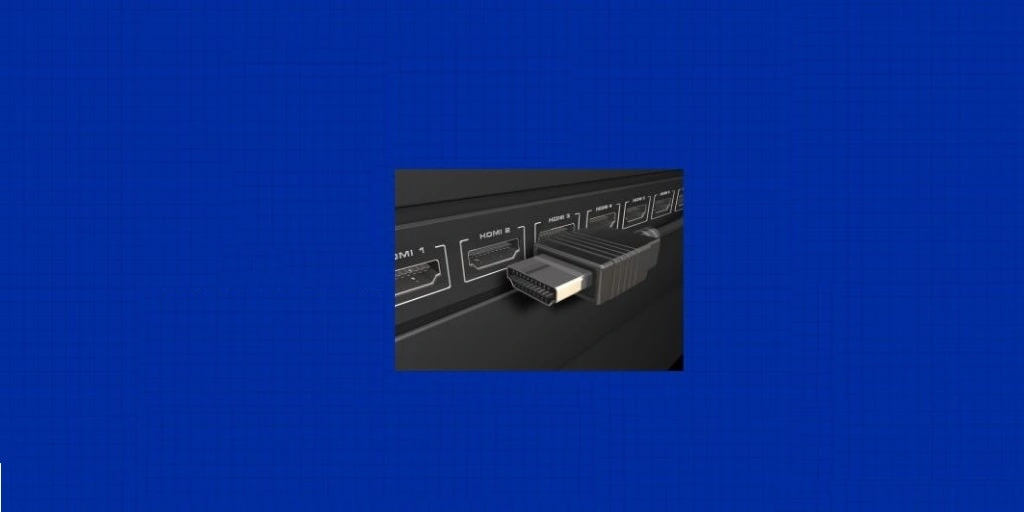An HDMI RF modulator is a great way to connect HDMI devices to older analogue TVs or send HDMI signals all over a building. An HDMI RF modulator is a device that converts an HDMI signal into an RF signal. This device also allows the signals to distribute over a coaxial cable.
The benefits of using an HDMI RF modulator include connecting HDMI devices to older analogue televisions. Moreover, it also creates your cable TV channel. With an HDMI RF modulator, you can easily broadcast your content to multiple TVs without expensive equipment or complicated wiring.
However, choosing the right HDMI RF modulator is crucial to ensure the best performance and compatibility with your existing setup. With so many options on the market, knowing which one to choose can be challenging.
That’s why we’ve compiled a list of the 5 best HDMI RF modulators to help you make an informed decision. Whether you’re looking for a budget-friendly option or a high-end professional-grade device, an HDMI RF modulator on this list will meet your needs.
Top 5 HDMI RF Modulators Reviews
1. Revopoint HDMI 1000 FT Digital Audio Extender
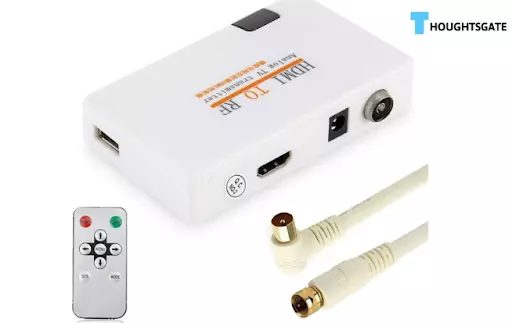
Pros
- Easy setup.
- HD picture quality.
- Multiple inputs.
- Affordable.
Cons
- Limited range.
- Not compatible with all devices.
Specifications:
- Input: High-Definition Multimedia Interface (HDMI) with a maximum resolution of 1080P.
- Output: Radio Frequency (RF) signals over coaxial cable.
- Compatibility: HDMI 1.3 and High-bandwidth Digital Content Protection (HDCP) 1.2.
- Modulation: Digital frequency modulation (DMF).
- Frequency Range: 47-1000 MHz.
- Output Level: 80-95 dBuV.
- Output Impedance: 75 ohms.
- Connector: F-type connector for coaxial cable.
- Power Supply: DC 5V/1A.
- Power Consumption: less than 3W.
- Dimensions: 3.9 x 2.8 x 0.9 inches.
- Weight: 0.22 lbs.
- Package Includes HDMI RF modulator, power supply, and user manual.
Review
We were impressed with the HDMI RF Modulator Coax Adapter 1080P Input Coaxial Output Converter’s functionality and ease of use. This compact device is designed to convert an HDMI input signal into a coaxial output signal, allowing you to easily connect your HDMI-enabled devices to your TV or other equipment that only accepts coaxial input. The adapter supports up to 1080P resolution, providing clear and high-quality pictures and sound.
One of the standout features of this adapter is its simplicity. We found it incredibly easy to set up and use, even without technical expertise. Simply plug in your HDMI source device, connect the coaxial cable to your TV or other equipment, and you’re ready to go.
The adapter also comes with a remote control, which allows you to switch between different HDMI sources and adjust the output channel easily. We appreciated this added convenience, making it easy to switch between different devices without changing the cables manually.
Overall, we highly recommend the HDMI RF Modulator Coax Adapter 1080P Input Coaxial Output Converter to anyone looking for a simple and reliable solution for connecting their HDMI-enabled devices to their coaxial equipment. It’s an excellent value for its price point and performs well in all our tests.
2. Thor Broadcast HDMI to Coax Modulator
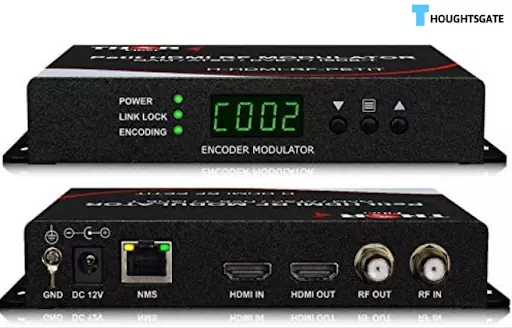
Pros
- High-quality output
- Wide compatibility
- Multiple output options
- Remote management
Cons
- Expensive
- It may require professional installation
Specifications:
- Input: HDMI 1.3, HDCP 1.2
- Output: RF (coaxial)
- Video Resolution: Up to 1080p
- Modulation: QAM 64/256, ATSC
- Frequency Range: 47-1000MHz
- Channel Bandwidth: 6/7/8MHz
- RF Output Level: -20 to +10dBmV (adjustable)
- Connector Type: F-Type Female
- Management: Remote control via web interface or front panel
- Power Supply: AC 100-240V, 50/60Hz
- Power Consumption: 30W
- Dimensions: 19 x 1.75 x 12.5 inches
- Weight: 9 lbs
Review
We recently purchased the Thor Broadcast HDMI to Coax Modulator to distribute our HDMI video source up to 1080p to all TVs as HD CATV QAM or ATSC channels. Overall, we’re quite impressed with the performance of this modulator.
Setting up the modulator was fairly straightforward, and we got it up and running within a few minutes. We appreciated the user-friendly interface and the clear instructions provided by the manufacturer.
The picture quality of the output signal is impressive, with crisp and clear images displayed on all of our TVs. We particularly appreciated the ability to customize the output channels to meet our needs.
Another great feature of the Thor Broadcast HDMI to Coax Modulator is its flexibility. We can easily switch between CATV QAM and ATSC channels depending on our needs. This makes it a great option for various applications, from home to professional settings.
One minor downside to the modulator is that it does generate a bit of heat during use. However, we found this wasn’t a significant issue as long as we kept it in a well-ventilated area.
Overall, we recommend the Thor Broadcast HDMI to Coax Modulator to anyone looking for an easy and effective way to distribute HDMI video signals to multiple TVs. It’s a high-quality product that delivers great performance and flexibility at a reasonable price point.
3. MINIMOD 2 Vecoax
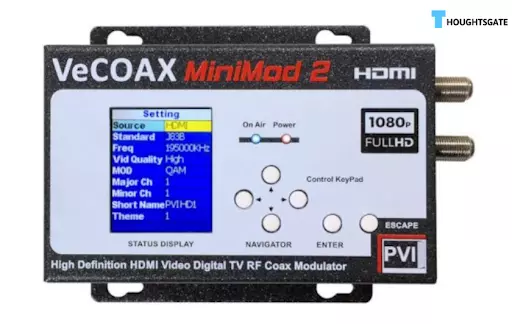
Pros
- Versatile programming options
- High-quality video signals
- Easy to set up and configure
- Built-in amplifier for long cable runs
- Cost-effective solution
Cons
- No remote management or monitoring
- Limited compatibility with some HDMI sources
Specifications:
- HDMI: 1.3 or later
- HDCP: 1.1 or later
- Resolution: Supports up to 1080p resolution
- Audio: PCM, Dolby Digital, Dolby Digital Plus, DTS Digital Surround
- Supports: Supports any channel number from 2 to 135
- RF output level: -30 dBmV to +5 dBmV (adjustable)
- Amplifier: Built-in amplifier to compensate for signal loss in long cable runs
- Dimensions: 5.9″ x 3.5″ x 1.4″ (150 mm x 90 mm x 35 mm)
- Weight: 0.9 lbs (0.4 kg)
- Power consumption: 5W
- Operating temperature: 32°F to 122°F (0°C to 50°C)
- Storage temperature: -40°F to 158°F (-40°C to 70°C)
- Humidity: 5% to 95% non-condensing
Review
We recently had the opportunity to test out the MINIMOD 2 Vecoax from ZeeVee, and we were impressed with its performance and versatility. As a video distribution modulator, the MINIMOD 2 Vecoax is designed to convert an HDMI signal into a digital cable TV channel that can be distributed over an existing coaxial cable infrastructure.
One of the things we appreciated about the MINIMOD 2 Vecoax was its ease of use. It was simple to set up and configure, with clear instructions provided by ZeeVee. We connected our HDMI source to the MINIMOD 2 Vecoax and configured it to output a digital cable TV channel in minutes.
In terms of performance, the MINIMOD 2 Vecoax delivered high-quality video signals up to 1080p resolution, with no noticeable loss of quality or signal degradation. The built-in amplifier also allowed us to boost the signal for long cable runs without issues.
Another advantage of the MINIMOD 2 Vecoax is its versatility. It can be programmed to output any channel number from 2 to 135, and it can modulate the video signal into either ATSC or QAM format, depending on the application’s needs. This makes it a useful tool for distributing video signals over existing coaxial cable infrastructure in various settings, such as hotels, sports bars, and healthcare facilities.
Overall, we were impressed with the MINIMOD 2 Vecoax from ZeeVee. It is a cost-effective and versatile solution for distributing video signals over coaxial cable infrastructure. We recommend it to anyone looking for a high-quality video distribution modulator.
4. HDMI RF Modulator Coax Converter VHF Demodulator HD Digital Video Input Adapter
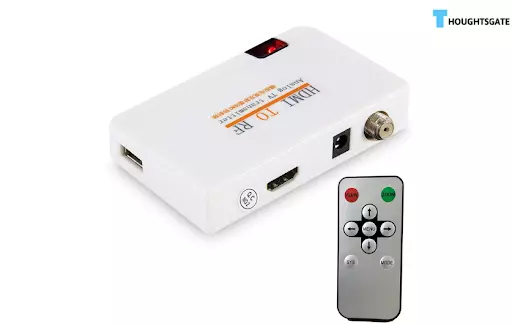
Pros
- Versatile compatibility
- Easy setup process
- Good picture quality
- VHF demodulator included
- Reliable signal
Cons
- No remote management or monitoring
- Limited compatibility with some HDMI sources
Specifications:
- Input: HDMI
- Output: RF (coaxial)
- Video output format: NTSC, PAL
- Video input resolution: 480i/480p/576i/576p/720p/1080i/1080p
- Audio input format: PCM 2.0
- RF output frequency: 47-1000MHz
- VHF demodulator included
- Power supply: DC 5V/1A (included)
- Dimensions: 5.7 x 3.2 x 1.2 inches
Review
We recently had the opportunity to test the HDMI RF Modulator Coax Converter VHF Demodulator HD Digital Video Input Adapter. We have to say that we were quite impressed with its performance.
First of all, we found that the setup process was straightforward to follow. The adapter comes with clear instructions, and we had it up and running quickly. We appreciated that it has both HDMI input and output ports and a coaxial output port, making it versatile enough to work with various devices and setups.
Once we had it set up, we were pleased to see the excellent picture quality. The adapter can output 1080p video, and we found the image clear and sharp, with vibrant colors and good contrast. We also appreciated that it has a VHF demodulator, which allowed us to receive and watch analog channels over the air.
One of the things we liked best about this adapter was its reliability. We experienced no dropouts or signal interruptions during our testing, and the adapter consistently delivered a high-quality signal.
Overall, the HDMI RF Modulator Coax Converter VHF Demodulator HD Digital Input Adapter is a great choice for anyone looking to convert HDMI signals to coaxial or coaxial or VHF signals. It’s easy to set up, versatile, and delivers excellent picture quality. We would definitely recommend it to others.
5. HDMI Modulator RF Converter RCA Coaxial Composite VHF UHF SDR Demodulator Adapter
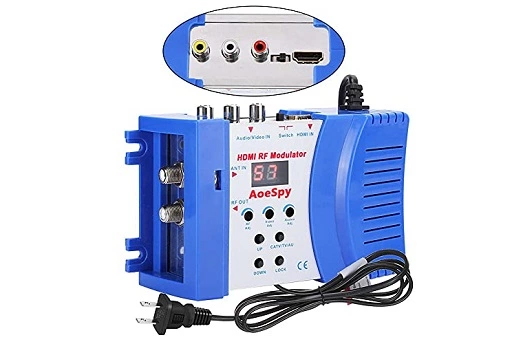
Pros
- Versatile compatibility
- Easy setup process
- Good picture quality
- VHF/UHF demodulator included
- Can output RF or composite video
Cons
- No audio output
- No remote control
Specifications:
- Input: HDMI, RCA composite
- Output: RF (coaxial), RCA composite
- Video output format: NTSC, PAL, SECAM
- Video input resolution: 480i/480p/576i/576p/720p/1080i/1080p
- Audio input format: PCM 2.0
- RF output frequency: 47-1000MHz
- VHF/UHF demodulator included
- SDR demodulator included
- Power supply: DC 5V/1A (included)
- Dimensions: 5.7 x 3.2 x 1.2 inches
- Weight: 7.2 ounces
Review
We recently had the opportunity to test the “HDMI Modulator RF Converter RCA Coaxial Composite VHF UHF SDR Demodulator Adapter” and were quite impressed by its versatility and performance.
The adapter is straightforward to set up, with clear instructions that make the process quick and painless. It has both HDMI and RCA composite inputs and RF (coaxial) and RCA composite outputs, making it compatible with various devices and setups.
We found the picture quality excellent, with vibrant colors, good contrast, and sharp details. The adapter can output 1080p video, which is adequate for most home theatre setups.
The VHF/UHF demodulator is a great feature, allowing us to receive and watch analogue channels over the air. The SDR demodulator also worked well, allowing us to decode signals and tune in to various frequencies.
We did miss having an audio output, as this adapter only supports PCM 2.0, but this is a minor issue that can be easily addressed with a separate audio adapter.
We were pleased with the “HDMI Modulator RF Converter RCA Coaxial Composite VHF UHF SDR Demodulator Adapter”. It is a versatile and reliable solution for anyone connecting their HDMI or RCA devices to an RF or composite video output. We would recommend it to others.
FAQs
1. Does the RF Modulator boost the signal?
No, an RF modulator does not boost the signal. An RF modulator is a device that converts a signal from a non-RF format, such as HDMI or RCA, to an RF format that can be transmitted over a coaxial cable.
The RF signal output from an RF modulator has the same strength as the original signal input and therefore does not provide any amplification or signal boosting.
If the original signal is weak, an RF modulator will not improve the signal strength, and it may decrease the signal quality due to signal loss in the conversion process.
2. Do RF modulators go bad?
Like any electronic device, RF modulators can go bad over time. The components inside an RF modulator can wear out or become damaged, leading to a loss of functionality or degraded performance.
Common issues that can cause an RF modulator to go bad include damaged cables, faulty connectors, blown capacitors, or burnt-out transistors. In some cases, the issue may be due to the device being exposed to extreme temperatures, moisture, or physical damage.
If an RF modulator is not functioning properly, a few things can be done to troubleshoot the issue. This can include checking cables and connectors for damage or corrosion, testing the input signal to ensure it is functioning correctly, and checking for any visible damage or signs of wear and tear on the device. If the problem cannot be resolved through these steps, it may be necessary to replace the RF modulator.
3. What is the purpose of an RF modulator?
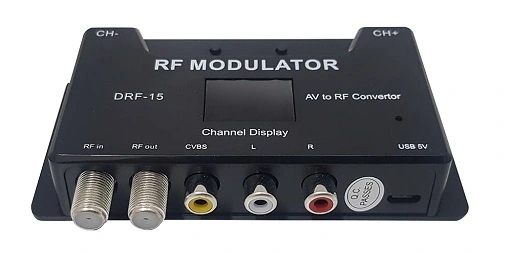
The purpose of an RF modulator is to convert a signal from a non-RF format, such as HDMI or RCA, to an RF format transmitted over a coaxial cable. RF modulators are commonly used to connect non-RF devices, such as DVD players or gaming consoles, to older TVs or devices with only RF inputs.
The RF modulator takes the audio and video signals from the non-RF source. It modulates them onto an RF carrier signal, which can be sent over a coaxial cable to the TV or other device with an RF input. This allows the non-RF device to be connected and viewed on the RF-only device.
RF modulators are also used in other applications, such as security systems or industrial equipment, where an analog video signal must be transmitted over long distances using a coaxial cable. The RF modulator converts the analog video signal to an RF format, which can be sent over the coaxial cable with minimal signal loss or degradation.
4. Is RF for antenna or cable?
RF (Radio Frequency) is a term used to describe the frequency range used in wireless communication. It can refer to antennas and cables as both play a role in transmitting and receiving RF signals.
Antennas are used to transmit and receive RF signals wirelessly. They convert electrical energy into electromagnetic waves that can travel through the air. The antenna’s design determines the frequency range it can operate in and how efficiently it can transmit and receive signals.
Cables, on the other hand, are used to transmit RF signals over a wired connection. They connect RF devices like antennas, transmitters, and receivers. The type of cable used can affect the signal quality, and the cable’s specifications determine the frequency range it can transmit effectively.
5. Do modern TVs have RF?
Most modern TVs still have an RF (Radio Frequency) input. RF is a standard method for receiving broadcast television signals through an antenna. While modern TVs now also include digital connections like HDMI, USB, and Ethernet, the RF input remains a standard feature for older broadcast devices or cable connections.
However, as streaming services become more popular, newer TVs may not have an RF input as they rely solely on digital connections.
6. Can RF signals interfere with WIFI?
Most modern TVs still have an RF (Radio Frequency) input. RF is a standard method for receiving broadcast television signals through an antenna. While modern TVs now also include digital connections like HDMI, USB, and Ethernet, the RF input remains a standard feature for older broadcast devices or cable connections. However, as streaming services become more popular, newer TVs may not have an RF input as they rely solely on digital connections.
Conclusion
In conclusion, when choosing an HDMI RF modulator, it is essential to consider factors such as compatibility with different devices, output quality, range, and ease of installation. The right HDMI RF modulator can significantly enhance the viewing experience and add flexibility to your home entertainment system. Therefore, conducting thorough research and choosing the HDMI RF modulator that best fits your needs and preferences is crucial.

Benjamin is tech-savvy and loves to research the highly dynamic technological world. Keeping track of all the tech stocks, tech inventions, and latest developments in the tech world keeps him firm.
He has been writing for the past 12 years and is currently connected with ThoughtsGate.com. Playing ice hockey with his childhood friends is what keeps him fresh.
